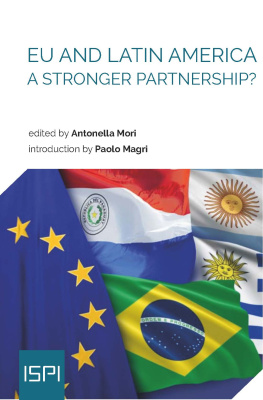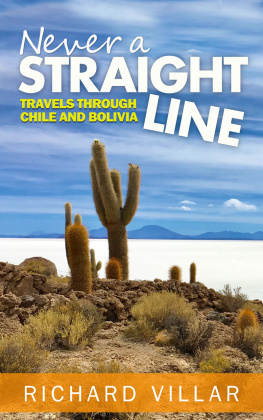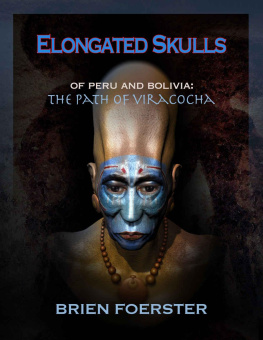Contents
- Introduction
- Chapter One The Stage
- Chapter Two The Contenders
- Chapter Three The Issue
- Chapter Four Opening Moves
- Chapter Five Decision at Sea
- Chapter Six Coming to Grips
- Chapter Seven The Presidents Depart
- Chapter Eight Tacna and Arica: The End in the South
- Chapter Nine A Diplomatic Interlude
- Chapter Ten On to Lima
- Chapter Eleven The Broken-backed War
- Chapter Twelve Loose Ends
- Selected Bibliography
- Index
The Ten Cents War Chile, Peru, and Bolivia in the War of the Pacific, 1879-1884
Bruce W. Farcau
PRAEGER
Westport, Connecticut London
Introduction
Every year for more than a century, on the 23rd of March, a crowd of varying size, depending on the weather, gathers in the Plaza Murillo in the Bolivian capital of La Paz. Waving Bolivian flags and possibly carrying a homemade banner or two, the procession forms up and straggles through the center of downtown, tying up traffic along the Prado. The marchers shout unintelligible slogans, punctuated by choruses of "Viva!" or "Muera!" depending upon the subject, and listen to impassioned speeches by minor politicians and the labored efforts of a tinny municipal band at Plaza Abaroa, beneath the statue of one of Bolivia's many martyrs, while vendors hawk everything from soft drinks and meat pies to batteries and disposable razor blades. If there happens to be a crew present from a local television station, youngsters might mug for the camera. If not, the crowd soon disperses as everyone hunts for an available taxi or space on a passing microbus for the ride home.
This is the annual "march to the sea," Bolivia's cri de coeur for her coastal provinces lost in the late 1800s to Chile in the War of the Pacific. Since it is always easier in La Paz, a city of steep inclines and very thin air (at twelve thousand feet above sea level), to conduct marches that head downhill, the procession actually heads awayfrom the sea, but it's the symbolism that counts. This misdirection is perhaps more symbolic of Bolivia's ill-fated struggle to hang onto her outlet to the sea than the organizers of the march might have intended. After countless demonstrations, petitions to virtually every international authority, and a plethora of conferences, bilateral ones, trilateral ones, and multilateral ones, Bolivia is no closer to regaining her lost territory than she was the day the last of her troops abandoned the field of battle to the victorious Chileans.
Bolivian school children may do a bittersweet dance, linked arm in arm, singing:
Library of Congress Cataloging-in-Publication Data
Farcau, Bruce W., 1951--
The Ten Cents War: Chile, Peru, and Bolivia in the War of the Pacific, 1879-1884 BruceW.Farcau.
p. cm.
Includes bibliographical references and index.
ISBN 0-275-96925-8 (alk. paper)
1. War of the Pacific, 1879-1884--Campaigns. I. Title.
F3097.F37 2000
983.0616--dc21 00-036709
British Library Cataloguing in Publication Data is available.
Copyright 2000 by Bruce W. Farcau
All rights reserved. No portion of this book may be reproduced, by any process or technique, without the express written consent of the publisher.
Library of Congress Catalog Card Number: 00-036709
ISBN: 0-275-96925-8
First published in 2000
Praeger Publishers, 88 Post Road West, Westport, CT 06881
An imprint of Greenwood Publishing Group, Inc.
www.praeger.com
Printed in the United States of America
The paper used in this book complies with the Permanent Paper Standard issued by the National Information Standards Organization (Z39.48-1984).
10 9 8 7 6 5 4 3 2 1
This book is dedicated to my father, a true hero, not the kind that makes a sacrifice in a moment of passion, but one that does so consciously, day after day, for the benefit of his loved ones. Thanks, Dad.
Ferrocarril, carril, carril (three large steps forward) Arica -- La Paz, La Paz, La Paz (three steps backward) Un paso atras, atras, atras (three more steps backward)
making fun of the decision of a Bolivian government years ago to accept Chilean construction of a railway up from the coast as compensation for the lost territories, but there is no evidence of any enthusiasm for doing anything about it in a practical sense.
In Peru, Bolivia's unfortunate ally in the War of the Pacific, the wounds run less deep. The defeat was certainly humiliating, and Peru also lost a substantial chunk of potentially valuable real estate, but nothing so traumatic as being converted overnight into a landlocked nation. There are certain similarities with the Franco-Prussian War of that same decade in that, like Paris, Lima was captured by the invader, and the Peruvians also fought a kind of broken-backed, guerrilla war until the weary victors were obliged to offer terms, although keeping the territorial spoils as did the Prussians. But there the similarity ends. One does not hear of the same kind of revanchism in Peru over Tarapac and Arica as in France over Alsace and Lorraine. In fact, the Peruvians have been satisfied with the belated return of the province of Tacna and the flexing of their military muscles with a more promising opponent, the much smaller and weaker Ecuador to the north, in a border dispute over remote jungle lands which sparked a minor war in 1940 and renewed skirmishing right up to the time of this writing, more than a half century later. In neither Bolivia nor Peru has there ever emerged a demagogue preaching a doctrine of economic austerity, massive rearmament and ultimate reconquest, among the many generals who have waltzed in and out of the revolving doors of the respective presidential palaces.
In Chile one senses an understandable pride in the fullness of their victory in the war and a perhaps more debatable pride in the modesty of their appropriations of neighboring lands. This was the last war against an armed foreign enemy in which the Chilean military took part, and this lack of a more "constructive" outlet for aggressive tendencies might have something to do with the ferocity with which the armed forces turned on their fellow citizens during the repressive regime of GeneralAugusto Pinochet in the 1970s and 1980s; but that would be the subject of another sort of book.
As with most conflicts in what would later become the Third World, the War of the Pacific (1879-1884) was of great moment to the peoples directly involved, but it has largely been ignored outside the region as neither the United States nor any major European power had a stake in the game. It is the purpose of this book to rectify this oversight to some degree. This study is designed to bring to light the drama of the military campaign itself and the human tragedy of the conflict for the soldiers on both sides, in the hope of making the period more readily accessible to the average reader. As in the case of an earlier work on the Chaco War between Bolivia and Paraguay in the 1930s, it has always seemed to the author that it is the ultimate tragedy for the soldiers involved to have fought and died and then to suffer the final humiliation of having their struggle and sacrifice ignored by the world.
There is no concerted effort here to break new historiographic ground, but to make use of the plentiful published sources already existing on the war in the form of memoirs and contemporary histories produced by actual participants in the conflict or other citizens of the belligerent countries. Where the trick lies is to take this material, virtually all of which is the product of the pens of less-than- objective writers, and attempt to construct an accurate and comprehensible picture of a highly complex tapestry of conflicting personalities in thoroughly unstructured political systems centering on a theme of life and death for thousands of men. After years of suffering through the bitterness and acrimony of America's revisionist historians in dealing with their own nation's past record, it is somewhat refreshing to find that historians of other nations are not at all embarrassed to take up the cudgels and defend their own homeland's actions, no matter how debatable. But this does not make the historian's job any easier in sorting through the material in a search for something approaching the truth. Since there are virtually no books on the war available in English, at least none that are not primarily focused on the more general histories of one or another of the participant nations, it is also hoped that this study will attract some attention from an American (i.e., the United States) readership.







